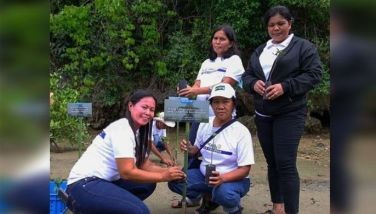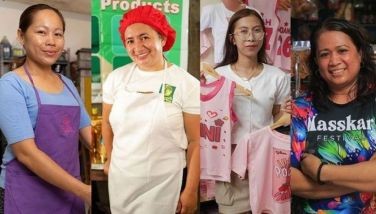The K to 12 curriculum
In order to make it easier to understand the new curriculum, allow me to use a chart that I use during my lectures. Here it is:

First of all, we should look at the new K to 12 curriculum in context. Education does not start when the child enters pre-school or kindergarten. It does not stop after the person leaves the formal or informal educational system. Lifelong learning continues throughout life (that is why it is called “lifelongâ€).
Second, formal education has to be seen in the context of what it is for, namely, to prepare a person for the world of work. Work does not mean only employment in a firm. It may mean entrepreneurship. It may mean a contemplative life. It may mean working at home, taking care of children or loved ones. I use the term “World of Work†loosely to mean life after school.
Third, the educational system should be viewed as a whole. The trifocalization of our formal educational system (DepEd, CHED, TESDA), as well as the internal structure of DepEd (different bureaus in charge of elementary, secondary, and alternative education) used to make it difficult to create a coherent curriculum. That changed when President Noynoy Aquino convened a Steering Committee for the K to 12 reform, with three co-chairs (Armin Luistro of DepEd, Patricia Licuanan of CHED, and Joel Villanueva of TESDA). The Steering Committee in turn brought down what used to be called “the Berlin Wall†between the Bureau of Elementary Education and the Bureau of Secondary Education, as well as the equivalent walls between technical committees or panels of DepEd, CHED, and TESDA. Today, everyone working on curriculum, including those in the private sector (both in education and in industry), is involved in molding the K to 12 curriculum.
Fourth, what are called “learning competencies†or “standards†are pegged to the minimum age of students at every age level. I say “minimum,†because some children (due to poverty or other circumstances) enter school late and may be older than, say, six, when they enter Grade 1. Child psychology has been instrumental in determining what subjects should be taught at certain levels. This is particularly crucial during the early years of schooling; theories in early childhood learning have grown by leaps and bounds in the past few decades.
Fifth, although it may be divided, for convenience, into five stages (pre-school and kindergarten (PS/K), elementary school (ES), junior high school (JHS), senior high school (SHS), and post-secondary or tertiary, formal education is really a continuum. There is no real difference, for example between a child just leaving Grade 6 and a child just entering Grade 7 (or what used to be called First Year High School). A child does not suddenly become a different person over summer break or after the elementary school graduation ceremonies.
To make it easier to understand how a child moves up the educational ladder (or highway, as it used to be called), let us take three hypothetical examples – Pedro, Pablo, and Maria (obviously inspired by one of my favorite singing groups, Peter Paul and Mary).
Pedro, Pablo, and Maria start learning from birth. There is still some debate about the exact age when children should learn how to read. In the UK, for example, some schools expect children to be able to read and write simple words before they enter pre-school. In the USA, the controversial Institutes for Achievement of Human Potential in Philadelphia has successfully taught children to read in infancy. Most educators around the world, however, prefer to wait for pre-school before teaching children how to read.
If they go to a Philippine public school, Pedro, Pablo, and Maria will know how to read only at the end of Grade 1 (fulfilling President Aquino’s promise of “Every child a reader by Grade 1â€). If they go to a private pre-school, they will most likely be already reading and writing letters or even simple words before they get to Kindergarten. The gap between public and private schools is one of the reasons parents with ample means send their children to private schools.
Even if they go to a public school, the three children will be doing something their older siblings did not do two years ago: they will be taking up Music, Arts, Physical Education, and Health (collectively known as MAPEH). MAPEH used to be taken starting Grade 4; it now starts in Grade 1. (To be continued)
CONGRATULATIONS to 21-year-old Radyo Balintataw which won a Golden Dove Award from the Kapisanan ng mga Brodkaster ng Pilipinas (KBP) as Best Radio Documentary Program for its special documentary on “The Assassination of Ninoy Aquino.†The documentary was produced by Cecile Guidote Alvarez, with the assistance of Heherson Alvarez who worked with Ninoy in exile and Hexilon Alvarez who was born in exile. Congratulations to the Radyo Balintataw production crew that have kept the faith all these years, earning various earlier awards.
- Latest
























